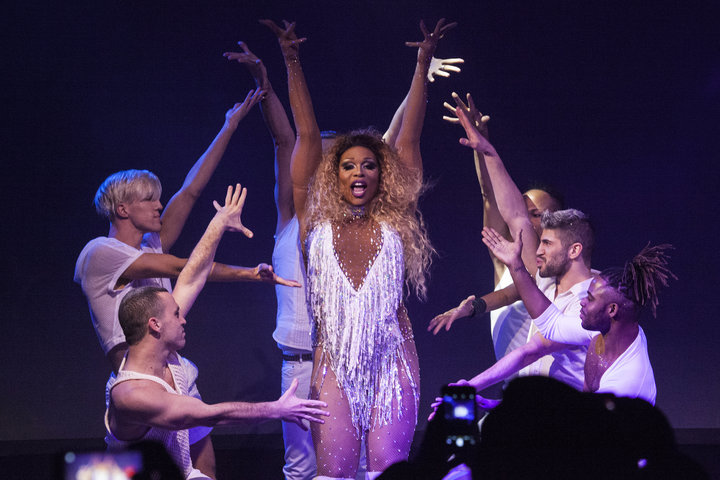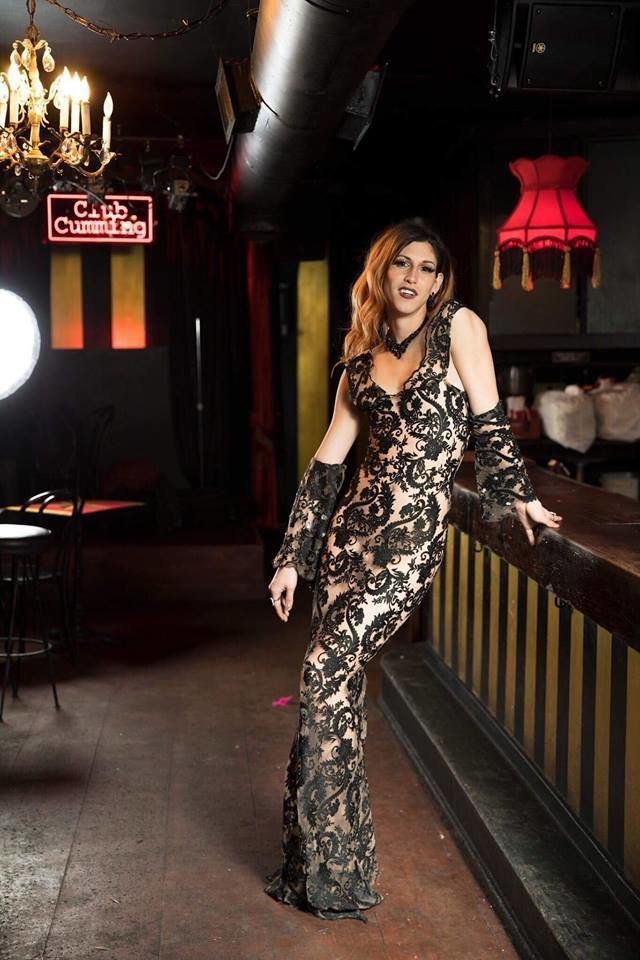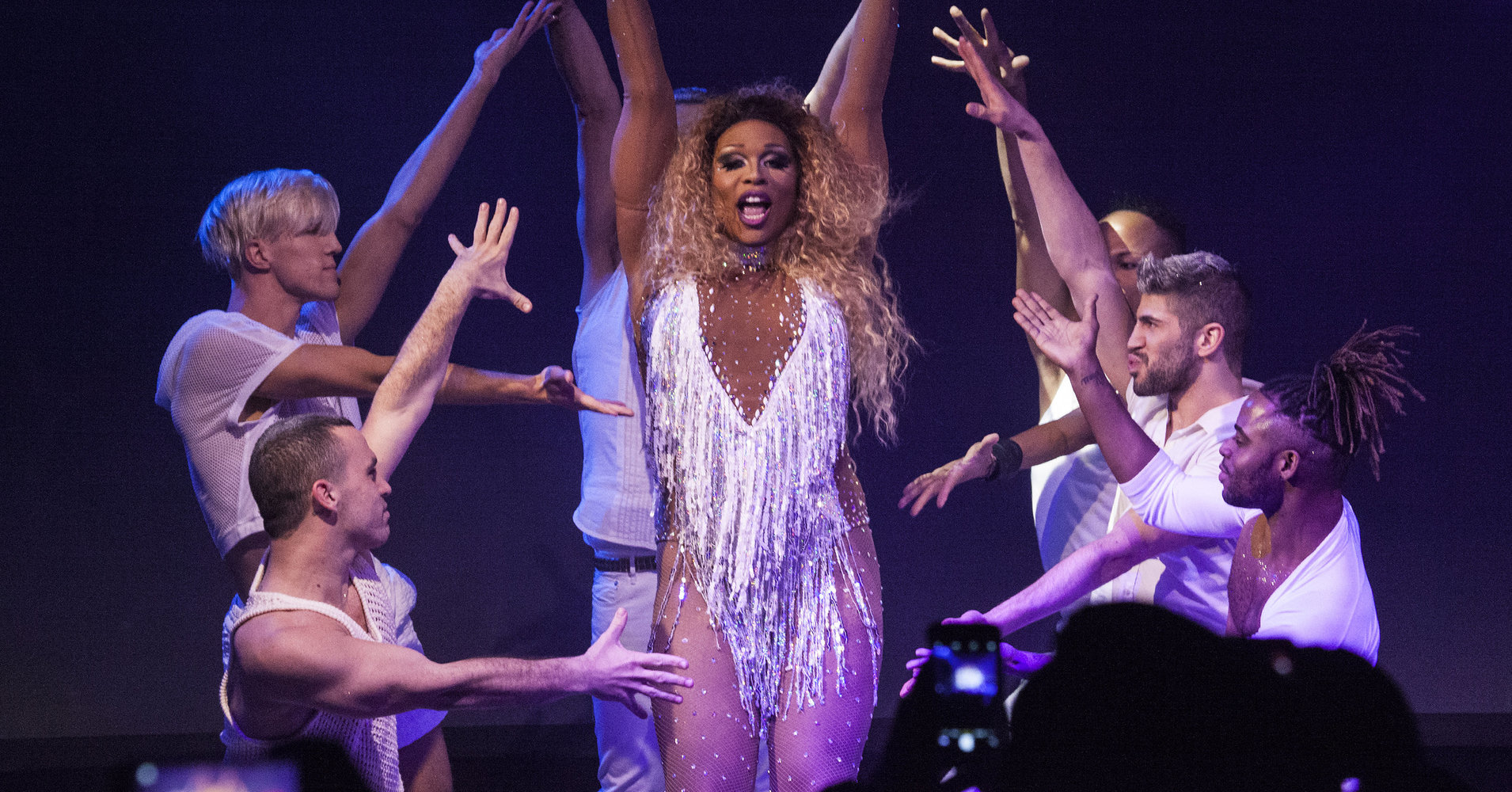[ad_1]
On season 9 of “RuPaul’s Drag Race,” New York queen Peppermint revealed to her fellow competitors and fans that she identified as a trans woman, and began a dialogue on gender often missing from primetime television.
The coming-out moment spotlighted that, aside from the camp, wit and glamour we expect from the now-10-season strong VH1 series, RuPaul’s show achieves something incredible for mainstream entertainment. Using wigs and gowns and makeup, it is slowly undoing rigid concepts inherent to the gender binary, and bringing complicated conversations about gender theory and performance to mainstream audiences.
What was once reserved for the annals of academic journals is now taking place on our personal screens.
And perhaps the most nuanced way gender has been explored on “RPDR” is through the voices of trans drag queens themselves. In being both trans and drag performers, these queens exist at the intersection of performed and lived gender identities. They are the driving force behind discussions of what it means to rewrite gender expression on and offstage.
Put in “Drag Race” terms, “we’re all born naked and the rest is drag.” And there are trans and gender non-conforming queens who, in their unique drag styles, rewrite what it means to express one’s gender.
In a phone interview with HuffPost, Peppermint spoke about the balance trans queens strike between their on- and off-stage identities. For many, she said, drag can function as a bridge to a more authentic, self-realized gender expression in their daily lives.
Today, “Peppermint the drag queen and Peppermint the everyday woman are definitely the same personality,” she said. But this wasn’t always the case. When she began drag at 18, she was preoccupied with projecting a sense of “realness,” or conventional femininity. But the longer she spent on stage crafting a persona, the more she realized how much room she had to explore her gender identity in less constrained ways.

“It was the only expression of this femininity I could indulge in without any pushback,” she said. “As I was able to come into my trans-ness I realized that I didn’t necessarily have to take my drag as seriously. My womanhood suddenly wasn’t at stake.”
Coined in 1990 by Judith Butler, the phrase “gender performance” purports that gender is rooted in societal construction and is thus made real only in an individual’s chosen actions or “performance.” According to Butler, gender is not tied to the physical body. Instead it’s acted out each day through clothing choices, personality and other expressions of personality; gender is ultimately up to the individual and how they feel.
“Drag has been a way for me to have these concentrated sessions almost of self-exploration in front of people,” trans queen Daphne Always told HuffPost. “And I think the more I’ve done that, the more I’ve started breaking down this line between my drag self and my personal self to where what I do onstage is becoming closer and closer to just who I am.”
Daphne started performing in 2011 when she arrived at New York University and immediately realized that drag offered her an outlet for the gender expression she was denied in her daily life. Like Peppermint, she embraced gender as fluid performance.
For many “RPDR” fans, who prior to watching the show lacked the context to explore gender as a changing expression of self, queens like Daphne and Peppermint are revolutionary. After appearing on “Drag Race,” Peppermint quickly understood the impact she had on viewers.
“I would meet people at, say, DragCon, and sometimes it would be a parent saying, ‘We’re so happy our young queer child, gender non-conforming, or even trans child has come out to us,’” she said. “And they’ve been able to kind of bond and connect not only around how my story resonated but then also how Drag Race has kind of opened the doors for them in general.”
Peppermint holds these moments close to heart because she knows she is one of the few representatives for trans women on screen.
It’s difficult to find images of trans and gender-nonconforming experiences represented in mainstream pop culture. Recently, Netflix’s “One Day at a Time” gained attention for its queer and gender-nonconforming teen characters, but the show is one of very few.
In 2012, GLAAD consolidated 10 years of research into a study called “Victims or Villains: Examining Ten Years of Transgender Images on Television.” In the examination of trans portrayal on television, the study found that of the “102 episodes and non-recurring storylines of scripted television that contained transgender characters,” 54 percent were described as perpetuating “negative representations.” Only 12 percent were considered thoughtful and non-stereotypical portrayals.
“Drag Race” itself hasn’t always had a rosy relationship with trans representation. During an interview with “The Guardian” in March, RuPaul made comments many read as transphobic, spurring backlash from both fans and queens who had appeared on the show. Beyond insinuating that trans girls gain their womanhood through surgery, he also stated that he would not allow transitioning trans girls on the show.
“It’s just really a shame that [Ru] decided to share these ideas that really boil down to saying trans women are men until they have surgeries,” Daphne told HuffPost. “A huge majority of America sees ‘Drag Race’ as maybe their only source of information about non-cis binary gender. These people are looking to RuPaul and what they hear is this information that’s just really flawed about the experience of trans people, non-binary people and women.”

Ru later apologized on Twitter, but the incident reflected a larger issue within the queer community — the resistance to fully accept non-cis queer people. For both Peppermint and Daphne, the answer is allyship and uplifting the voices not often heard.
“Allyship is something that a member of the community grants to you or ascribes to you. I don’t think allyship is something that you can claim for yourself,” Daphne said. “[It] has to involve placing the voices of the community front and center and making sure they’re the ones directing the conversation happening in media.”
Controversy aside, “RuPaul’s Drag Race” remains one of the few mainstream outlets for marginalized queerness. In making academic theories of gender accessible, it paves the way for better trans representation. And that, for Peppermint, is something she’ll never stop fighting for.
“I choose to use my voice quite literally to speak out on behalf of our community. I view it as contributing to the future of trans folk and gender non-conforming people,” she said. “We’ll get there and it’ll be a beautiful place. And I don’t know how long it’ll take but it’s necessary. Someone has to take these steps so I’ll take them.”
CORRECTION: A previous version of this column indicated Peppermint revealed she was trans on season 8 of “Drag Race.” In fact, it was season 9.
[ad_2]
Source link

